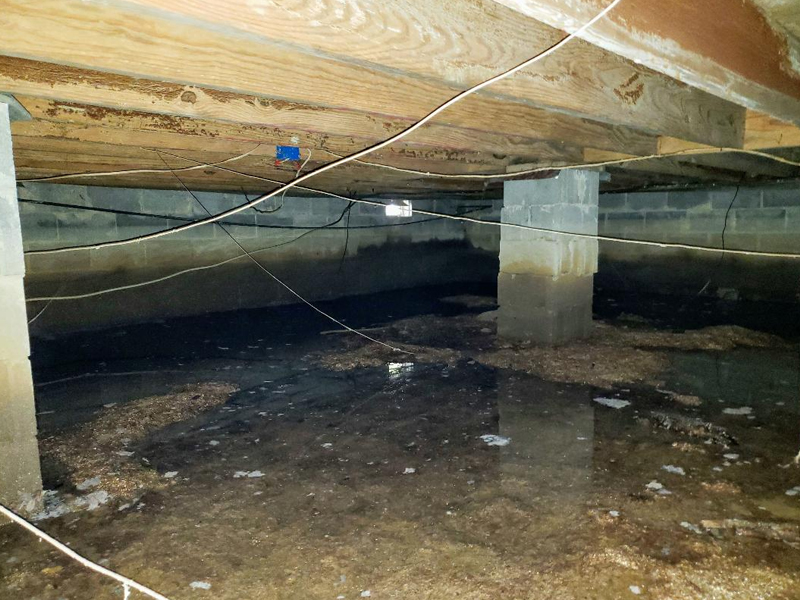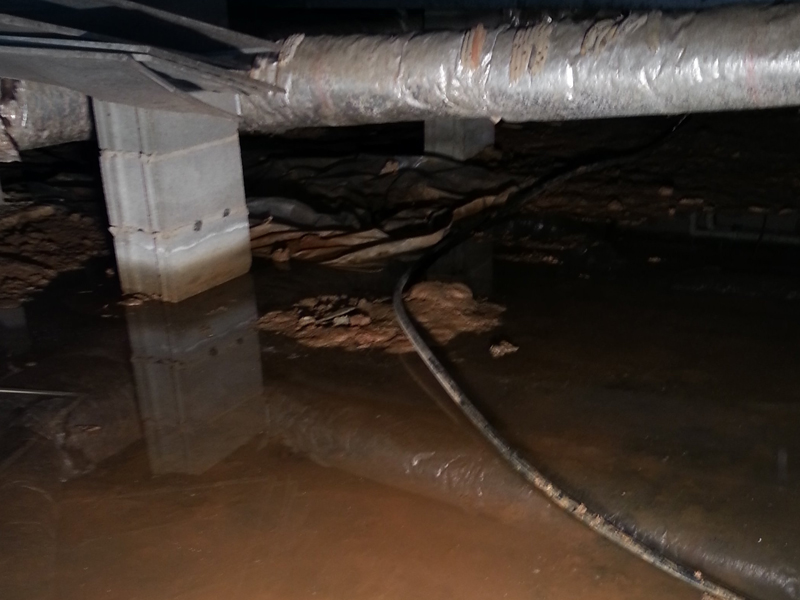Is a wet crawl space bad?
A wet crawl space is generally considered bad and can lead to various issues if not addressed promptly. A damp environment in the crawl space provides an ideal breeding ground for mold and mildew. Mold spores can easily spread throughout your home, leading to potential health issues, including respiratory problems and allergies.
Excess moisture can weaken the foundation and wooden structures in the crawl space. Over time, this can lead to rot and decay, compromising the integrity of your home's foundation and causing structural problems.
A wet crawl space attracts insects, rodents, and other pests, which can further damage the wooden structures and insulation. These pests can eventually find their way into the living areas of your home.
A wet crawl space can lead to higher humidity levels, making your home feel muggy and uncomfortable. Your HVAC system may have to work harder to maintain a comfortable temperature, leading to increased energy bills.
Damp environments often produce musty and unpleasant odors, which can permeate into your living spaces, making your home less inviting.
A wet crawl space can decrease the value of your property, making it less appealing to potential buyers if you decide to sell your home in the future. It is necessary to use a dehumidifier to control the humidity in a wet crawl space.


Should the dehumidifier be in a crawl space with vents open or closed?
In most cases, it is best to keep the crawl space vents closed when using a dehumidifier. Closing the vents helps create a controlled environment, allowing the dehumidifier to work more efficiently and effectively. You should keep the crawl space vents closed when using an energy efficient crawl space dehumidifier for the following reasons:
1. Preventing outside moisture:
Crawl space vents are designed to allow air circulation, which can bring in moisture from the outside. Closing the vents helps minimize the entry of humid air from the outdoors, which can counteract the efforts of the compact crawl space dehumidifier.
2. Encapsulation benefits:
If your crawl space is encapsulated (sealed with a vapor barrier), keeping the vents closed is essential. Encapsulation aims to prevent moisture from entering the crawl space, and open vents would undermine this effort.
3. Efficiency:
When the vents are closed, the crawl space dehumidifier with pump can focus on removing moisture from the air inside the crawl space without having to compete with the outside humidity.
4. Energy savings:
The dehumidifier doesn't have to work as hard to maintain lower humidity levels when the vents are closed, which can result in energy savings and potentially extend the lifespan of the dehumidifier.
However, there are certain situations where crawl space vents may need to be opened temporarily. For example, in very humid climates or during the warmer months, you may want to open the vents to promote cross-ventilation and improve air circulation. This can help prevent stagnant air and reduce the risk of mold growth. But, it's important to close the vents again when the outside air becomes more humid or during cooler seasons when humidity levels drop.
Additionally, consider installing a hygrometer or humidity sensor to monitor the humidity levels inside the crawl space, which can help you make informed decisions about when to open or close the vents.
Post time: Jul-20-2023
 +86-13376814803
+86-13376814803  robert@hzhongtai.com
robert@hzhongtai.com 












